Welcome to the world of pickleball, a sport that combines the finesse of tennis, the strategy of badminton, and the camaraderie of a lively game of ping pong. As you delve into this exciting sport, one of the first concepts you’ll encounter is the rally. So, what exactly is a rally in pickleball? This guide will unravel the secrets behind this thrilling aspect of the game and equip you with the knowledge to master the basics. Whether you’re a seasoned player or a novice just starting out, understanding the ins and outs of a rally will be the key to taking your pickleball skills to a whole new level. So, grab your paddle, put on your game face, and embark on an exhilarating journey into the heart of pickleball rallies.
What Is A Rally In Pickleball?
A rally in pickleball is a sequence of shots exchanged between the players on opposing teams. It is similar to a point, but instead of only one player scoring, a rally can go on for multiple shots until one team ultimately wins the point.
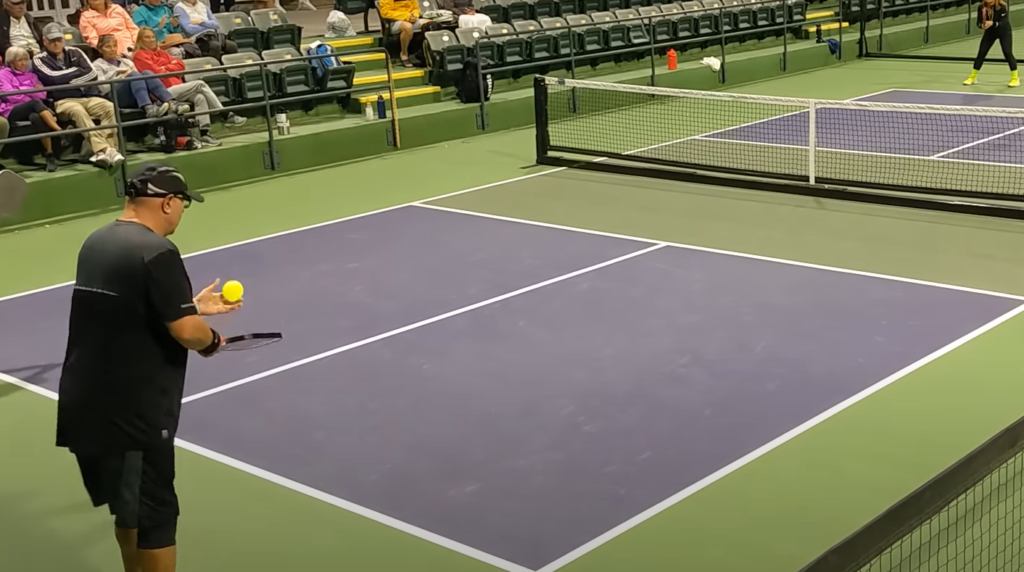
In pickleball, rallies are an essential part of gameplay and can be both exciting and challenging. The longer the rally goes on, the more intense the gameplay becomes as players try to outsmart and outmaneuver their opponents. But what exactly constitutes a rally in pickleball?
Beginning of a Rally
A rally in pickleball begins with the serve. The serving team, consisting of one player, is responsible for initiating the rally by hitting the ball over the net to their opponents’ side of the court. The serve must be performed diagonally, ensuring that the ball lands in the opponent’s service court. Once the ball is in play, both teams have an equal chance to win the rally by strategically positioning themselves, utilizing various shots, and employing effective teamwork. It is through these dynamic exchanges of shots and strategies that the excitement and competitiveness of pickleball truly come to life.
Length of a Rally
There is no specific limit on how long a rally can go on for in pickleball. It largely depends on the skill level, physical endurance, and strategic prowess of the players involved. In recreational games, rallies may only last a few shots before one team scores a point.The intense back-and-forth exchanges, strategic maneuvering, and display of athleticism during these extended rallies make them captivating spectacles for both players and spectators alike.
Types of Shots
During a rally, players can utilize a wide range of shot techniques to keep the ball in play. These shots include dinks, volleys, smashes, and lobs, each serving a specific purpose on the court.
A dink, for instance, is a soft shot that requires finesse and precision, often used to catch opponents off guard. Volleys, on the other hand, involve hitting the ball before it bounces, requiring quick reflexes and accurate timing. Smashes are powerful overhead shots that are executed with force and speed, aimed at putting pressure on the opposing team. Lastly, lobs are high-arcing shots that can be used to create space or buy time to reposition on the court.
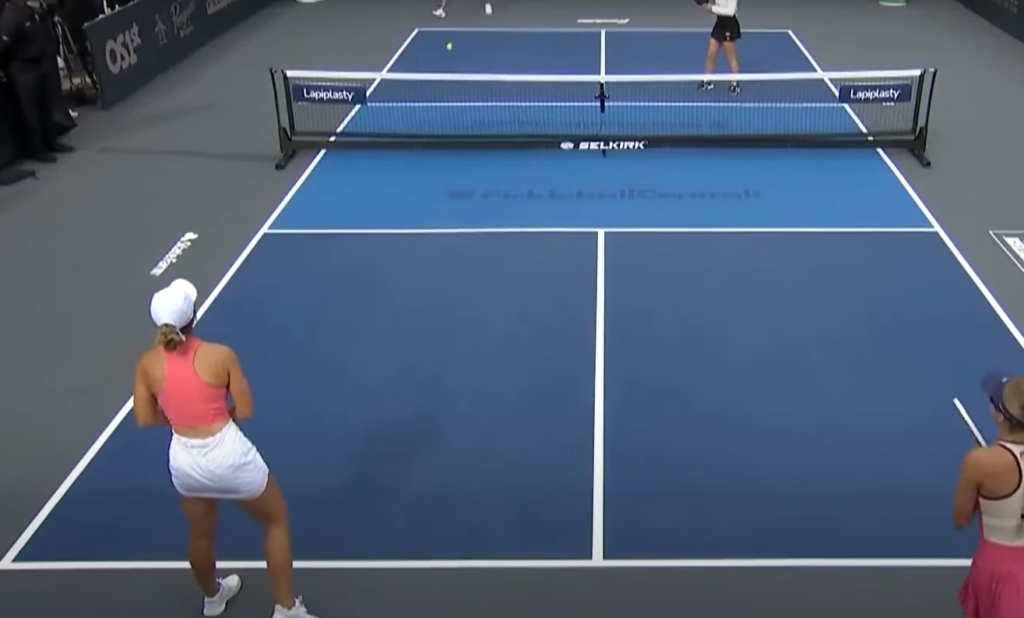
The choice of shot during a rally depends on the situation at hand, including the position of the players, the speed of the ball, and their individual playing style and strengths. A well-executed shot can not only keep the ball in play but also shift the momentum in favor of the team, increasing their chances of winning the point and ultimately the match.
Strategies for Winning a Rally
To emerge victorious in a thrilling pickleball rally, players must skillfully blend their technique, strategy, and anticipation.
Alongside these fundamental aspects, players can adopt various tactics like purposefully targeting the weaker player, artfully altering the pace and direction of shots, and engaging in effective communication with their partner. Mastering these nuanced strategies elevates the excitement and competitiveness of the game, making every rally a captivating test of skill and wit. Rallies are an integral part of pickleball and can make for some exciting gameplay. They require players to be agile, quick-thinking, and strategic in their approach [1].What is Rally Scoring in Pickleball
Pros of Rally Scoring in Pickleball
One of the biggest pros of rally scoring in pickleball is that it allows for a more efficient and fast-paced game. With traditional scoring, players only have the opportunity to score when they are serving, resulting in longer games and sometimes less excitement for spectators.
With rally scoring, every point counts, regardless of who is serving. This means that each player has an equal opportunity to score and the game can move along at a quicker pace. It also adds an element of pressure for players, as they must stay focused and engaged throughout the entire game.
Another advantage of rally scoring is that it eliminates the need for keeping track of complex traditional scoring systems. In traditional pickleball, points are only scored when a player is serving and there can be confusion and disagreements over who should be serving and when. Rally scoring eliminates this issue by simplifying the scoring process.
Cons of Rally Scoring in Pickleball
While there are many benefits to rally scoring, it does have some drawbacks as well. One major con is that it can make winning a game more dependent on luck or chance. In traditional scoring, a player must win by two points, which allows for a more decisive victory. With rally scoring, it is possible for a player to win by only one point, making the outcome of the game less certain.
Another disadvantage is that rally scoring can be mentally exhausting for players. With every point being crucial, players may feel added pressure and stress throughout the entire game. This can lead to mental fatigue and potentially affect the quality of play.
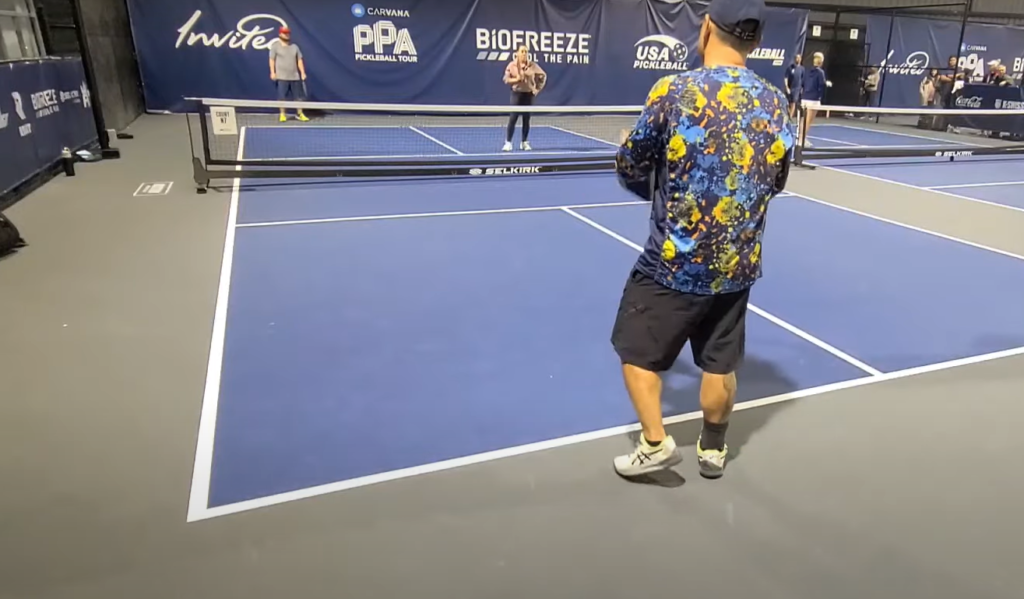
Additionally, some argue that rally scoring takes away from the strategy aspect of traditional pickleball. In traditional scoring, players must strategically plan their serves and take advantage of opportunities when serving. With rally scoring, this strategic element is somewhat diminished as both players have an equal opportunity to score on every point [2].
Differences Between Traditional Scoring and Rally Scoring
Traditional scoring is a method of scoring in sports where points are only awarded to the serving team. Once the serving team loses a rally, they will lose their serve and the other team will have a chance to score.
On the other hand, rally scoring is a more modern method of scoring where points can be awarded to either team regardless of who served. This means that every rally counts towards the overall score, making the game more fast-paced and competitive.
One of the main differences between traditional scoring and rally scoring is that traditional scoring can lead to longer games as teams may hold onto their serve for multiple points. This can result in a slower pace of play and potentially less excitement for spectators.
Rally scoring, on the other hand, encourages constant action and quick rallies as every point counts towards the score. This can lead to more intense gameplay, making it a more dynamic and exciting experience for both players and spectators.
Another key difference is that traditional scoring may put too much emphasis on serving skills, as the serving team has the sole ability to score. With rally scoring, all aspects of the game are given equal importance as both teams have the opportunity to score points.
Furthermore, traditional scoring can also lead to a more predictable outcome as teams with strong serving abilities may have an advantage. Rally scoring, on the other hand, allows for more unpredictability and comebacks as no team has a significant advantage solely based on serving ability.
It is also worth noting that rally scoring has become the preferred method of scoring in many sports, including volleyball and badminton. This is due to its fast-paced and dynamic nature, making it more engaging for both players and spectators.
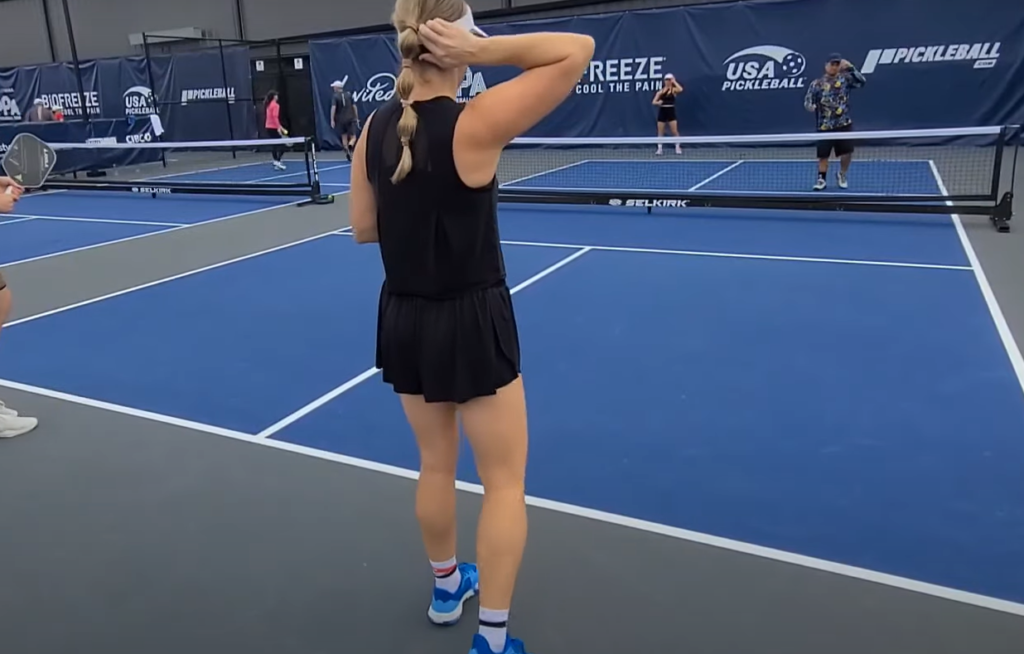
In conclusion, the differences between traditional scoring and rally scoring are mainly related to the pace of play, importance of serving skills, balance of gameplay, and overall excitement level. While both methods have their merits, rally scoring has become the preferred option for many sports, revolutionizing the way games are played and enjoyed. So, it’s important to understand the differences between these two scoring methods in order to fully appreciate and enjoy the sport.
Pros and Cons: Rally Scoring vs. Traditional Scoring
Pros of Rally Scoring
- One of the major benefits of rally scoring is that it keeps the game moving at a faster pace. Since each point counts, players are constantly motivated to perform their best and earn points for their team.
- Rally scoring also promotes fairness, as both teams have an equal opportunity to score points regardless of who served first.
- It also eliminates the need for side-outs and rotations, which can be confusing for new players or spectators.
- Rally scoring also allows for more strategy in the game, as teams must constantly adapt and adjust their tactics to gain points.
- It also creates a more exciting and intense atmosphere, as every point contributes to the overall score.
Cons of Rally Scoring
- One of the main drawbacks of rally scoring is that it can lead to longer matches. Since every point counts, games can go on for a longer period of time compared to traditional scoring.
- It also eliminates the importance of a strong serve. In traditional scoring, a team could win a point by serving an ace or forcing their opponent to make an error. But in rally scoring, even if a team serves well, they still have to earn the point through rallies.
- Rally scoring also puts extra pressure on players, as every mistake can lead to a point for the other team. This can lead to more anxiety and stress during games.
- It also takes away the momentum shift that occurs in traditional scoring when a team wins a side-out. In rally scoring, there is no break in play, which can be mentally and physically exhausting for players.
Another issue with rally scoring is that it can devalue the significance of a comeback. In traditional scoring, a team could come back from a large deficit by winning multiple side-outs. But in rally scoring, the point-by-point system makes it harder for teams to make a significant comeback.
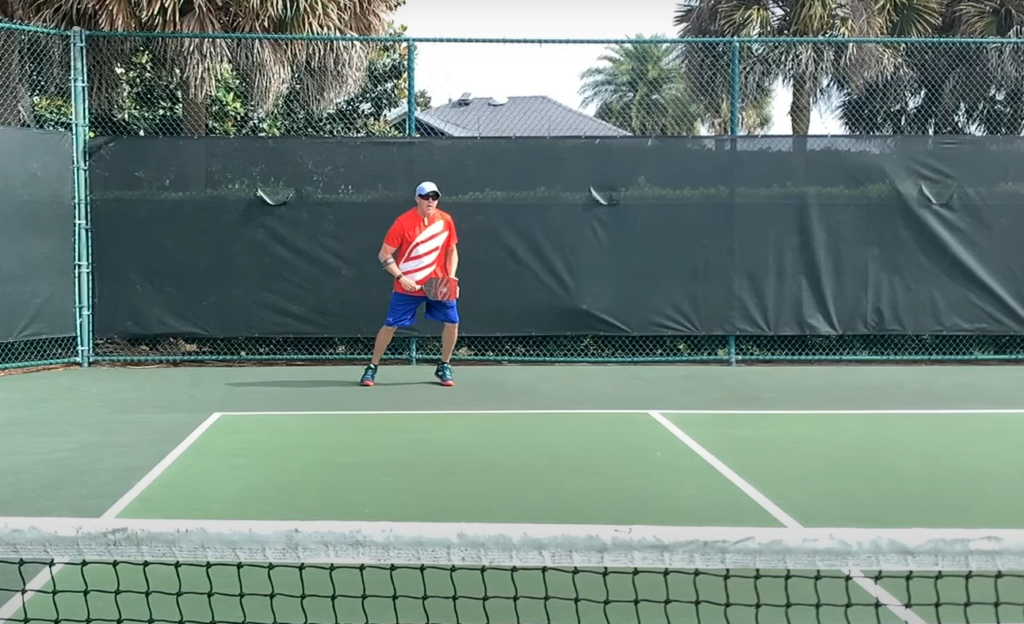
Overall, both rally scoring and traditional scoring have their pros and cons. It ultimately comes down to personal preference and the type of game atmosphere you want to create. Some players may thrive under the pressure of rally scoring, while others may prefer the momentum shifts and strategic elements of traditional scoring. Ultimately, it’s important for leagues or tournaments to consider both options and choose what works best for their players and audience.
FAQ
What does rally scoring mean?
Rally scoring is a scoring system used in many sports, including volleyball and badminton. It means that every time a point is scored by either team, regardless of which team served the ball, a point is awarded. The term “rally” refers to the continuous back-and-forth nature of the game. This type of scoring adds a fast-paced and competitive element to the sport, as every point counts towards winning the game.
Why is rally scoring used?
Rally scoring is used in various sports for several reasons. It promotes a faster pace of play and makes each point more valuable, leading to more intense and exciting matches. It also eliminates the need for players to serve multiple times before earning a point, making games shorter and more efficient. Additionally, rally scoring allows for a fairer distribution of points between teams, as each point is earned through skill and strategy rather than luck or the number of times a team has served.
Are there any downsides to rally scoring?
While rally scoring has many benefits, some argue that it takes away from the traditional aspect of sports where only the serving team can score a point. It also requires players to constantly be on their toes, as each rally counts towards the final score, making it more mentally and physically demanding. Some players may prefer the break in between serves to catch their breath or make strategic adjustments. Overall, the use of rally scoring is a matter of personal preference and depends on the sport and its rules.
What is the opposite of rally scoring in pickleball?
The opposite of rally scoring in pickleball would be traditional or side-out scoring. This means that only the serving team can earn a point, and the receiving team will have to win back serve in order to score. This type of scoring is commonly used in sports such as tennis, where players take turns serving and the game progresses through sets rather than continuous rallies.
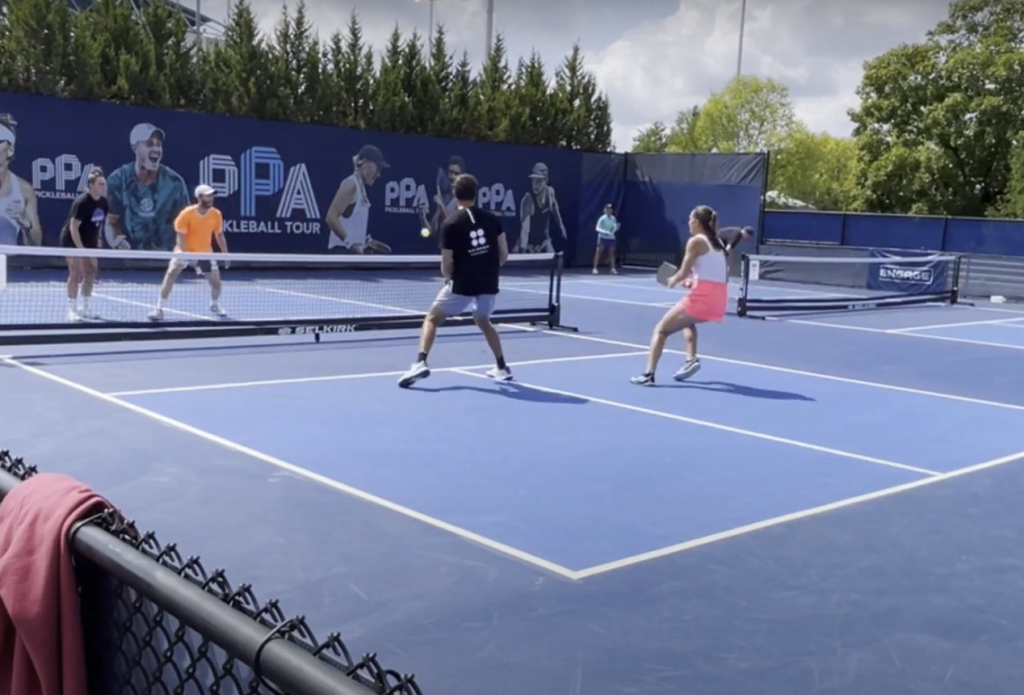
Some argue that traditional scoring in pickleball allows for more strategic and mental aspects of the game, as players must strategize to earn back serve. However, others prefer rally scoring for its fast-paced and intense nature.
Is rally scoring used in all levels of play?
Rally scoring is commonly used in recreational and amateur levels of play, as well as professional levels. However, some levels of competition may have specific rules regarding scoring, so it is always important to check the regulations before playing. Additionally, in some cases, rally scoring may only be used for certain sets or games within a match. Overall, rally scoring is a popular and widely accepted method of scoring that adds excitement and competitiveness to various sports.
How many points are needed to win a rally in pickleball sports?
In pickleball, rallies are typically played to 11 points, but in some cases can go up to 15 or even 21 points depending on the level of play. However, a team must win by at least two points in order to be declared the winner of the rally. This means that a game could potentially go on for several more points if both teams continue to score back and forth. The number of points needed to win a rally may also vary depending on the specific rules and regulations set by different organizations or tournaments. Overall, the scoring system in pickleball adds an element of excitement and unpredictability to the game, as players must earn each point through skill and strategy rather than just serving.
What is the difference between rally scoring and side out scoring?
The main difference between rally scoring and side-out scoring is the way points are awarded. In rally scoring, every time a point is scored by either team, a point is awarded regardless of which team served the ball. This means that both teams have an equal chance to earn a point during each rally, making the game more fast-paced and competitive.
On the other hand, in side-out scoring, only the serving team can score a point. The receiving team must win back serve in order to earn a point and continue playing. This type of scoring is commonly used in sports such as tennis or volleyball. Some argue that side-out scoring allows for more strategic play and mental challenges, while others prefer rally scoring for its fast pace and intensity.
In conclusion, rally scoring and side-out scoring offer different dynamics to sports, but both have their own advantages and disadvantages. It ultimately comes down to personal preference and the specific rules of a particular sport or level of play. So, whether you’re a fan of continuous action or strategic planning, there is sure to be a scoring system that suits your style in various sports such as pickleball, volleyball, and badminton.
Why is pickleball gaining popularity?
Pickleball has gained popularity in recent years due to its accessibility, inclusivity, and fun nature. It can be played by people of all ages and skill levels, making it a great activity for families and friends to enjoy together. The smaller court size and slower pace compared to other racket sports also make it easier for beginners to pick up and enjoy. Additionally, pickleball’s fast-paced and competitive nature has attracted many athletes from other sports looking for a new challenge. Overall, the sport has grown rapidly and gained a strong following due to its unique blend of fun and competition.
Useful Video: Rally Scoring in Pickleball is Way Better than People Think
Conclusion Paragraph
So, a rally in pickleball is a three-step process: serve, return and rally. But the game doesn’t end there. In fact, it’s just beginning. In pickleball, the rally is where players showcase their skills and strategies as they battle to score points. It involves quick reactions, precise shots and smart placement of the ball. The most exciting part? The rallies can go on for quite some time, making it an intense and thrilling game for players and spectators alike.
References:
- https://primetimepickleball.com/what-is-a-rally-in-pickleball/
- https://www.paddletek.com/blogs/news/rally-scoring-debate





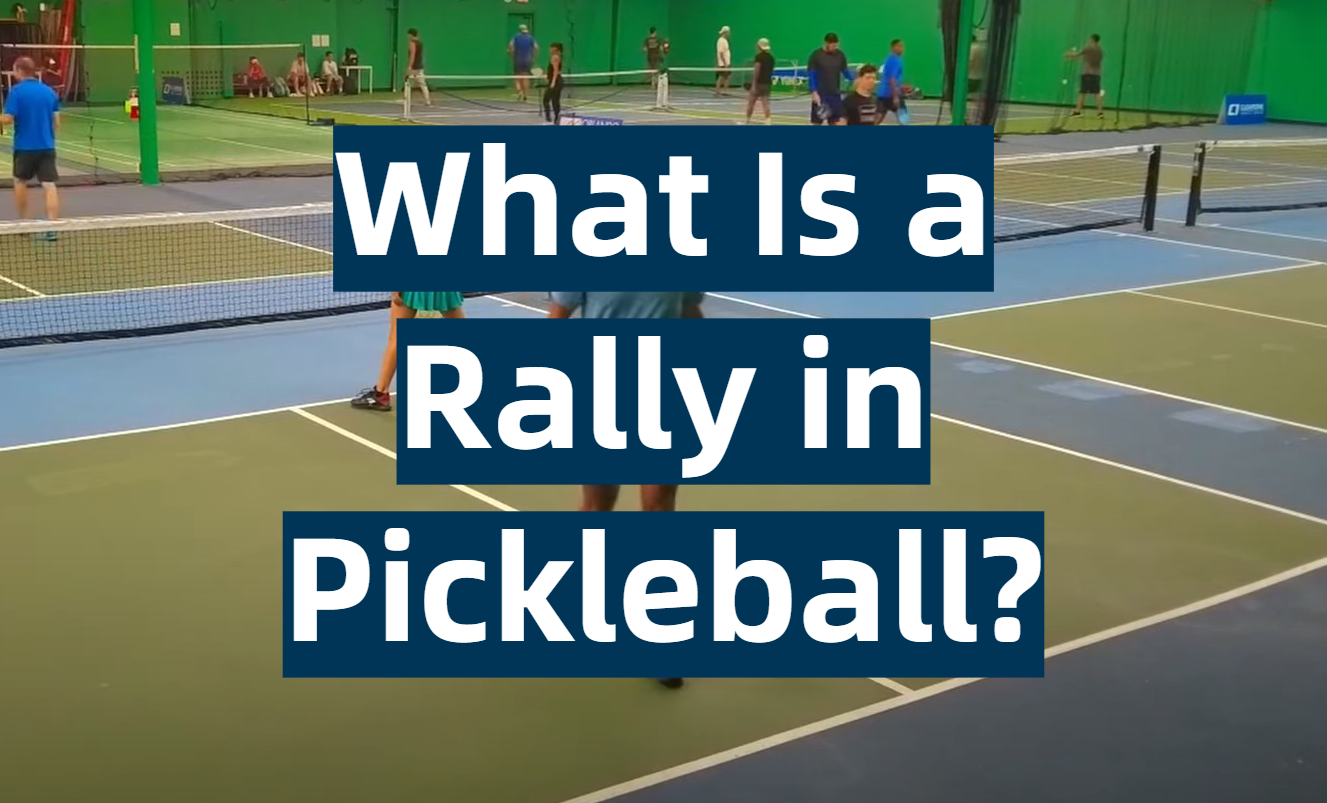
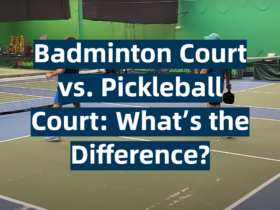

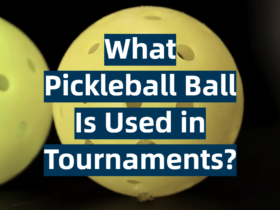

Leave a Review